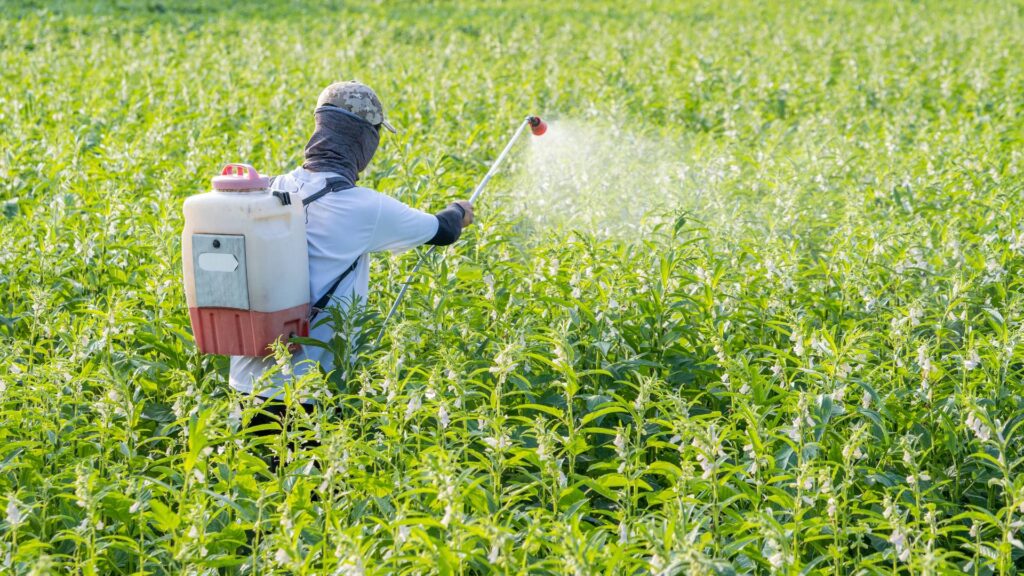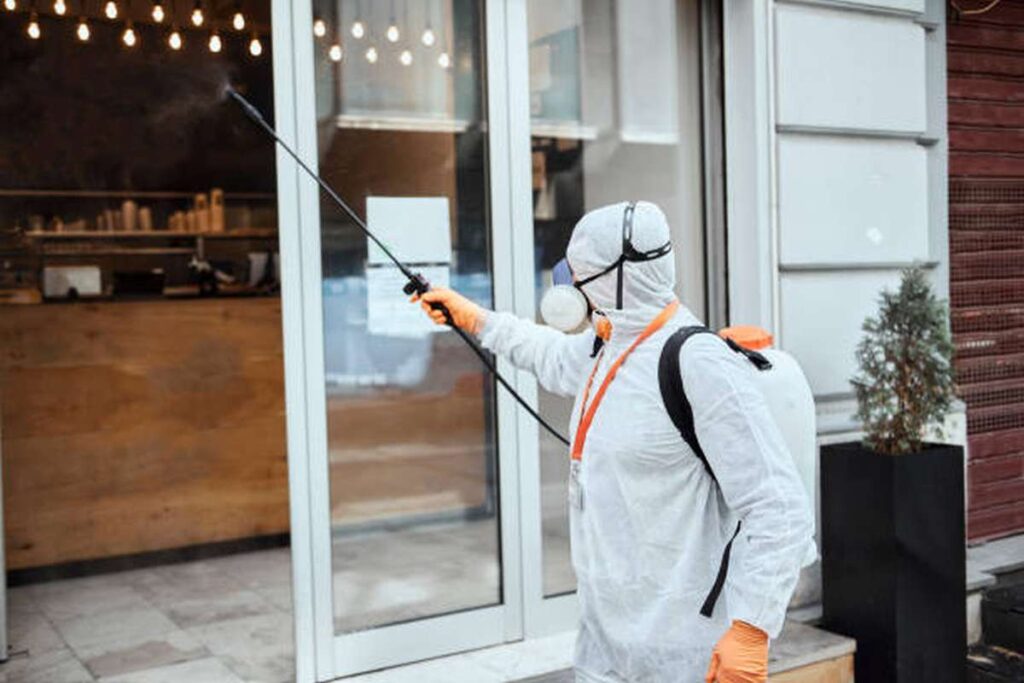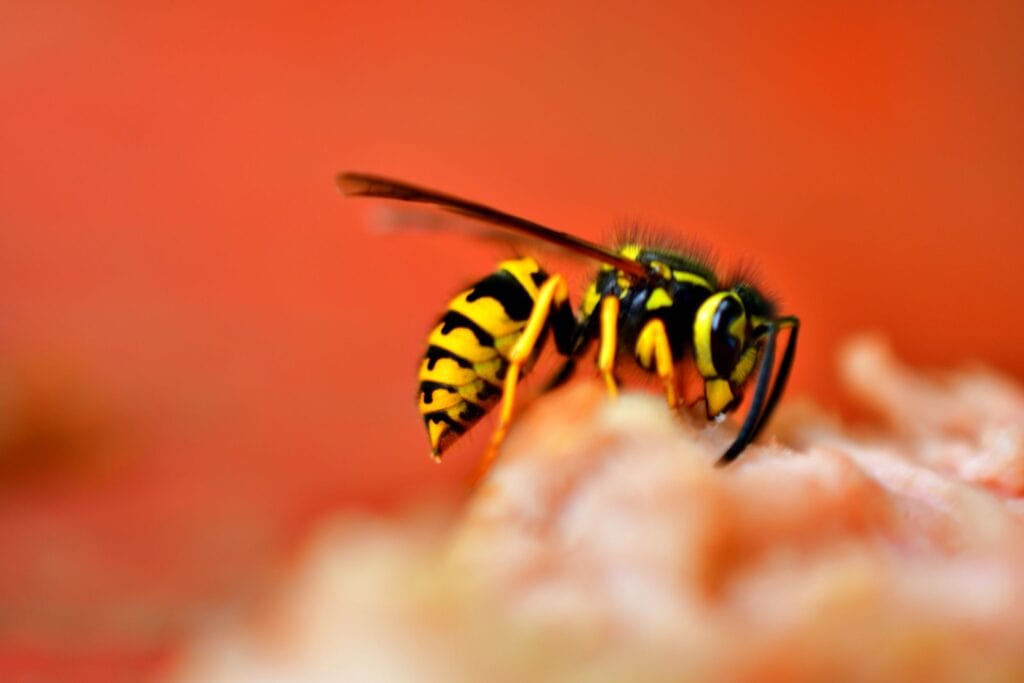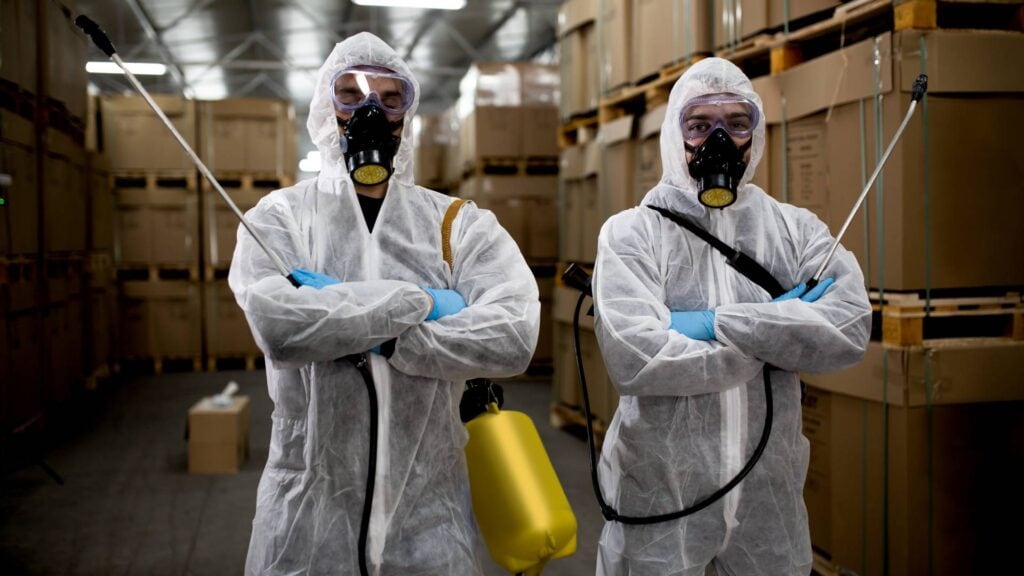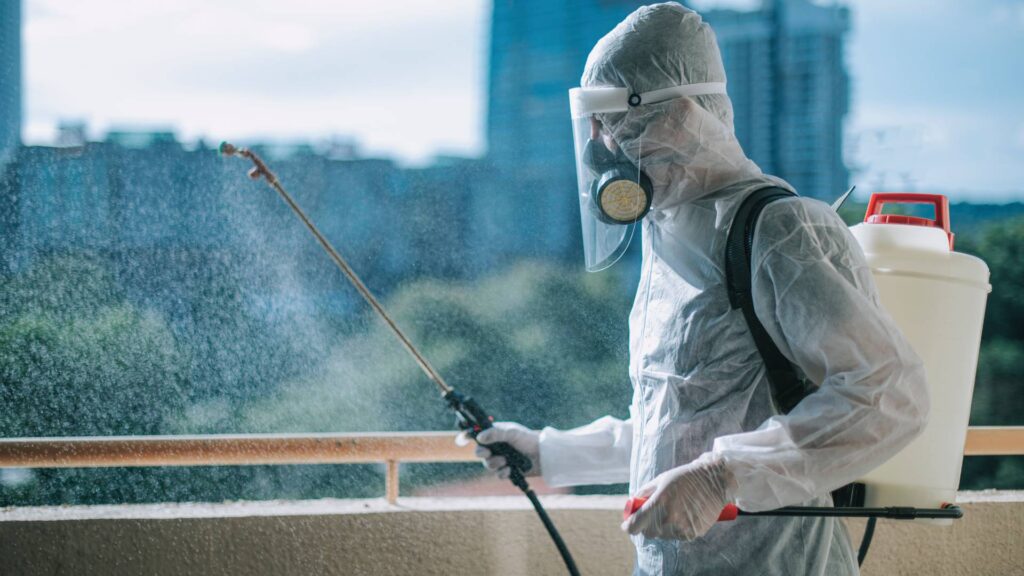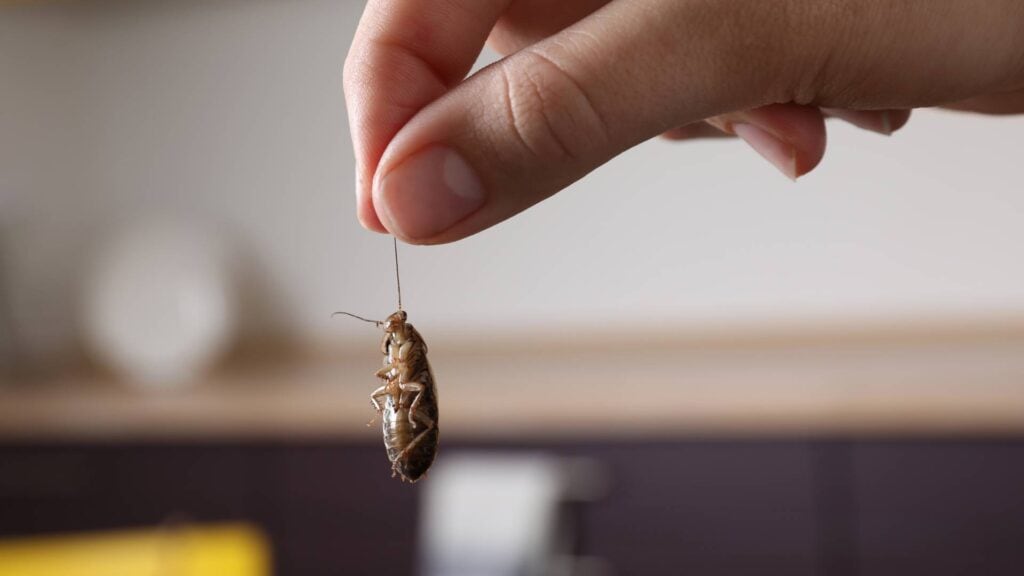In the battle against pesky invaders, homeowners and environmentalists find themselves at a crossroads: should they turn to herbal remedies or rely on chemical solutions for pest control? This age-old debate has garnered increasing attention as concerns about environmental impact, health risks, and efficacy have emerged. Our blog delves deep into this contentious issue, examining the pros and cons of herbal and chemical pest control methods.
How Does Herbal Pest Control Work?
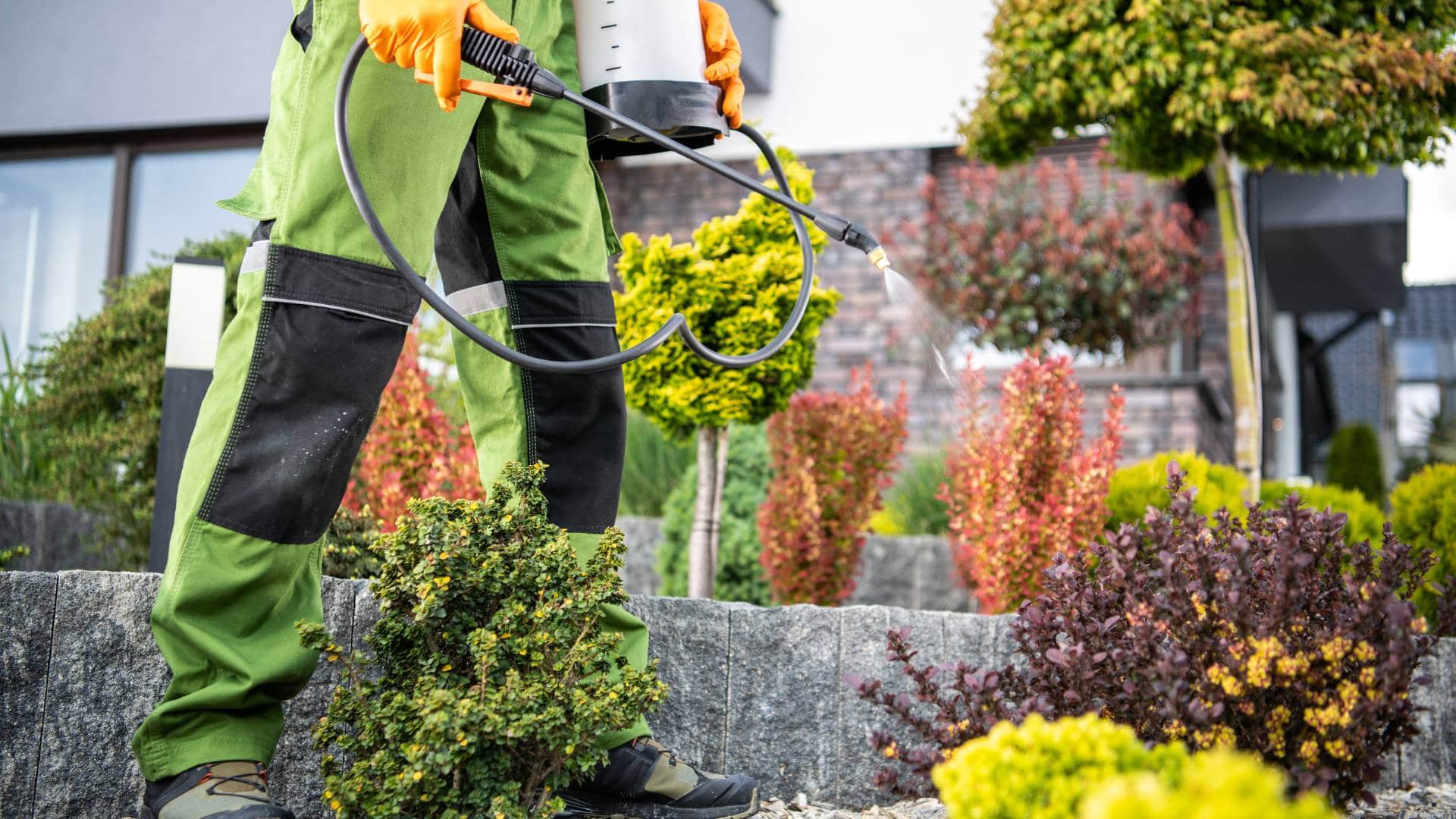
The debate between herbal and chemical pest control methods is ever-present in the quest to maintain a safe and pest-free environment. Each approach has advantages and challenges, influencing the decision-making process for homeowners, businesses, and pest control professionals.
Chemical Pest Control: A Quick Solution With Long-Term Considerations
Chemical pest control methods utilise synthetic compounds to eliminate or manage pest populations effectively. These methods are known for their quick action, broad-spectrum efficiency, and ease of application. Chemical pesticides can penetrate pest-hiding spots, offering a comprehensive solution to infestations. However, their use raises concerns regarding environmental pollution, health risks to humans and pets, and the potential for pests to develop resistance over time. The strong odours and possible long-term health hazards associated with chemical treatments are also significant drawbacks.
Herbal Pest Control: Nature's Gentle Touch
On the other hand, herbal pest control employs natural ingredients, such as plant extracts and essential oils, to repel or eliminate pests. This method is celebrated for its eco-friendliness, minimal side effects, and safety for humans and pets. Herbal treatments, such as citronella, neem, and diatomaceous earth, offer a more sustainable and health-conscious approach. However, they may require more frequent application and are less effective against severe infestations. The limited scope of pests that herbal methods can address and the variability in product quality are challenges that users may need to address.
How Effective Is Chemical Pest Control Compared to Herbal Methods?
The debate between chemical and herbal pest control methods is significant, touching on effectiveness, environmental impact, health concerns, and sustainability. Drawing insights from various sources, this article aims to comprehensively examine both methods, highlighting their advantages, limitations, and appropriate applications.
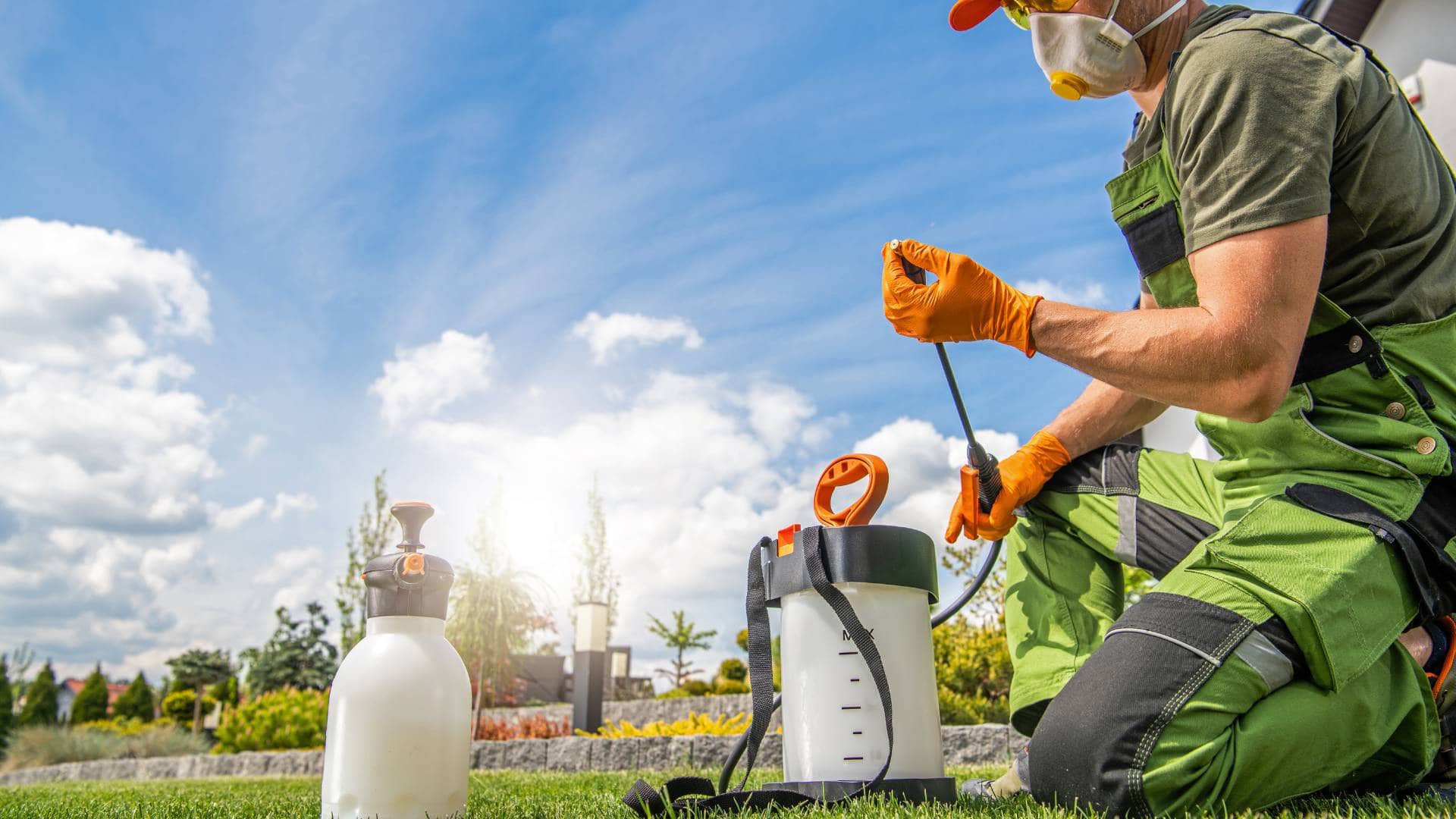
Chemical Pest Control: Efficiency Meets Controversy
Chemical pest control has become integral to modern agricultural practices and urban pest management. It involves using synthetic pesticides, including insecticides, rodents, and herbicides, to eliminate or manage pest populations. The primary advantage of chemical pest control is its efficiency; these substances can quickly reduce or eliminate pests over large areas. However, chemical pesticides' environmental and health risks cannot be overlooked. Concerns include:
- Potential harm to non-target species.
- Pollution of water sources.
- The development of pesticide-resistant pest strains.
Moreover, the impact on human health, particularly for those applying the pesticides and those living in treated areas, raises significant safety questions.
Herbal Pest Control: A Sustainable Alternative
Herbal pest control utilises natural substances derived from plants known for their pest-repellent or insecticidal properties. This method is gaining popularity due to its perceived safety for humans and the environment. Examples include neem oil, pyrethrin (from chrysanthemums), and essential oils like citronella and eucalyptus. Herbal pest control offers a more eco-friendly approach, often with fewer side effects and a lower risk of resistance development among pest populations. However, its effectiveness can vary depending on the pest species, concentration of the active ingredients, and application methods. Additionally, herbal treatments may require more frequent application than their chemical counterparts.
Integrated Pest Management (Ipm): Bridging The Gap
Integrated Pest Management (IPM) represents a holistic approach that combines various pest control methods, including chemical and herbal treatments, to achieve effective and sustainable pest management. IPM focuses on understanding the pest's life cycle, monitoring pest populations, and applying targeted interventions with an emphasis on environmental conservation and minimising chemical use. This approach allows for the judicious use of chemical pesticides when necessary, complemented by biological control methods, cultural practices, and mechanical barriers to manage pest populations effectively.
Making The Right Choice
The choice between chemical and herbal pest control methods depends on several factors, including the type of pest, the severity of the infestation, environmental considerations, and health concerns. In many cases, a combination of methods, as seen in IPM, may offer the most effective and responsible solution. Consulting with pest control professionals can provide tailored advice and ensure that the chosen methods are applied safely and effectively.
What Are the Key Differences Between Herbal and Chemical Pest Control?
Choosing herbal and chemical pest control methods is a significant consideration for homeowners, businesses, and agricultural operations, reflecting broader health, safety, and environmental concerns. This comparison draws on insights from various sources to outline each approach's key differences, advantages, and considerations.
Herbal Pest Control: Nature's Solution
Herbal pest control methods utilise natural substances and organisms to combat pest infestations. These methods are gaining traction for their safety and minimal environmental impact. Here are some key points:
- Safety and Eco-friendliness: Herbal methods are safe for humans, pets, and the environment, making them ideal for residential settings.
- Effectiveness Over Time: While herbal treatments may take longer to show results, usually 3-4 days, they are practical and less damaging to the ecosystem.
- Cost Considerations: Initially, herbal treatments may be more expensive than chemical options, but their eco-friendly nature and safety can justify the cost.
- Multiple Applications: In cases of high pest density, multiple treatments may be necessary, reflecting the gentler nature of herbal pest control.
- Sourcing Challenges: Due to their lower market popularity, herbal pest control products can take more work to find.
Chemical Pest Control: The Traditional Approach
Chemical pest control remains widespread due to its quick action and accessibility. However, it comes with significant health and environmental considerations:
- Quick and Broad-Spectrum Effectiveness: Chemical methods can rapidly reduce pest populations, offering a quick solution to infestation problems.
- Accessibility and Cost: These products are readily available and often cheaper upfront than herbal alternatives.
- Variety of Forms: Chemical pesticides are available in aerosols, powders, concentrates, and granules and offer versatile application methods.
- Health Risks: Exposure to chemical pesticides can be particularly harmful to children, older people, and pets due to the toxins they contain.
- Long-Term Efficacy: Despite their immediate effectiveness, the long-term environmental impact and potential for pests to develop resistance are significant drawbacks.
Integrated Pest Management (Ipm): A Balanced Approach
Integrated Pest Management (IPM) represents a holistic strategy combining herbal and chemical methods and mechanical and cultural controls to manage pest populations effectively and sustainably. IPM emphasises:
- Monitoring and Identification: Understanding pest behaviour and lifecycle to implement targeted control measures.
- Minimal Chemical Use: Employ chemical controls only when necessary and with safer alternatives to reduce environmental impact.
- Sustainability: Focusing on long-term pest management solutions that are environmentally sound and economically viable.
What Do Case Studies and Real-Life Examples Tell Us About Pest Control Methods?
Exploring herbal and chemical pest control methods reveals a rich tapestry of traditional knowledge, scientific research, and practical applications aimed at sustainable agricultural practices. This synthesis draws from diverse sources, each contributing valuable insights into the efficacy, challenges, and prospects of using botanical and synthetic pesticides for crop protection.
Herbal Pest Control: A Sustainable Approach
Herbal pest control methods leverage the natural insecticidal properties of plants to combat pests. These eco-friendly methods offer a safer alternative for humans and non-target organisms. The use of botanicals such as neem (Azadirachta indica), garlic (Allium sativum), and chilli pepper (Capsicum spp.) has been documented across various studies, highlighting their effectiveness in controlling a wide range of pests from insects to nematodes.
- Neem (Azadirachta indica): Known for its broad-spectrum insecticidal properties, neem-based preparations have succeeded in field and storage pest management. Its active compounds, particularly azadirachtin, disrupt the life cycle of pests, offering a potent yet environmentally benign pest control solution.
- Garlic (Allium sativum) and Chili Pepper (Capsicum spp.): These common kitchen ingredients are culinary staples and potent pest control agents. Garlic's sulphur-containing compounds and chilli pepper's capsaicin offer repellent, insecticidal, and antifungal benefits, effectively managing pests in various crops.
Chemical Pest Control: Efficacy And Environmental Concerns
Chemical pest control, relying on synthetic pesticides, has been a cornerstone of modern agriculture, ensuring high crop yields and efficient pest management. However, concerns over environmental pollution, human health risks, and the development of pest resistance have prompted a reevaluation of their use.
- Synthetic Pesticides: While offering quick and effective pest control solutions, synthetic chemicals pose significant risks, including contamination of water, air, and soil and adverse effects on non-target species. The global shift towards safer, more sustainable agricultural practices has increased scrutiny and regulatory constraints on their use.
Integrated Pest Management (Ipm) And The Role Of Botanical Pesticides
Integrated Pest Management (IPM) emerges as a holistic approach, incorporating herbal and chemical methods to achieve effective, sustainable pest control. Botanical pesticides play a crucial role in IPM, offering multiple modes of action and reducing reliance on synthetic chemicals. Their integration into pest management strategies aligns with global efforts towards sustainable agriculture, food safety, and environmental conservation.
Challenges And Future Directions
Despite their potential, adopting botanical pesticides faces challenges, including variability in efficacy, formulation and commercialisation hurdles, and a need for comprehensive regulatory frameworks. Future research should focus on standardising botanical preparations, understanding their modes of action, and assessing their safety and environmental impact.
Conclusion
The debate between herbal and chemical pest control methods has become increasingly important due to environmental impact, health risks, and efficacy concerns. Chemical pest control methods, such as insecticides, rodenticides, and herbicides, are known for their quick action, broad-spectrum efficiency, and ease of application. However, they also raise concerns about environmental pollution, health risks, and the potential for pest resistance over time.
Herbal pest control, on the other hand, employs natural ingredients like plant extracts and essential oils, offering a more sustainable and health-conscious approach. Herbal treatments, such as citronella, neem, and diatomaceous earth, are celebrated for their eco-friendliness, minimal side effects, and safety for humans and pets. However, they may require more frequent application and are less effective against severe infestations.
Integrated Pest Management (IPM) is a holistic approach that combines various pest control methods, including chemical and herbal treatments, to achieve effective and sustainable pest management. It focuses on understanding the pest's life cycle, monitoring pest populations, and applying targeted interventions with an emphasis on environmental conservation and minimising chemical use.
The choice between chemical and herbal pest control methods depends on factors such as the pest type, the infestation's severity, environmental considerations, and health concerns. Consulting with pest control professionals can provide tailored advice and ensure the chosen methods are applied safely and effectively.
Herbal pest control methods are gaining popularity due to their safety, eco-friendliness, and minimal environmental impact. They are ideal for residential settings and have multiple applications. Chemical pest control, on the other hand, is widespread due to its quick action and accessibility but comes with health and environmental concerns. Chemical pesticides can rapidly reduce pest populations but have long-term effects and potential for pest resistance. Integrated Pest Management (IPM) is a holistic approach that combines herbal and chemical methods and mechanical and cultural controls to manage pest populations effectively and sustainably. IPM emphasises monitoring and identification, minimal chemical use, and sustainability.
Herbal pest control methods, such as neem, garlic, and chilli pepper, have been documented for their effectiveness in controlling pests. However, concerns over environmental pollution, human health risks, and pest resistance have led to a reevaluation of their use. Chemical pesticides pose significant risks, including contamination of water, air, and soil and adverse effects on non-target species. Integrated Pest Management (IPM) incorporates botanical pesticides into pest management strategies, aligning with global efforts towards sustainable agriculture, food safety, and environmental conservation. However, challenges include variability in efficacy, formulation and commercialisation hurdles, and a need for comprehensive regulatory frameworks.
Content Summary
- The ongoing debate between herbal and chemical pest control methods is gaining traction due to environmental and health concerns.
- Chemical pest control, like insecticides and herbicides, offers quick results but raises worries about environmental damage.
- Herbal pest control relies on natural ingredients such as plant extracts and essential oils for a sustainable approach.
- Ingredients like citronella and neem are celebrated for their eco-friendliness and safety for humans and pets.
- However, herbal treatments may require more frequent application and might be less effective against severe infestations.
- Integrated Pest Management (IPM) combines various methods, including chemical and herbal treatments, for sustainable pest management.
- IPM focuses on understanding pest life cycles and minimising chemical use for environmental conservation.
- Choosing between chemical and herbal pest control depends on factors like pest type, infestation severity, and environmental impact.
- Consulting with pest control professionals ensures the safe and effective application of chosen methods.
- Herbal pest control is gaining popularity due to its safety and minimal environmental impact, particularly in residential settings.
- Neem, garlic, and chilli pepper are effective herbal pest control methods.
- However, environmental pollution and pest resistance concerns warrant reevaluating herbal approaches.
- Chemical pesticides pose risks like water and air contamination, necessitating a shift towards sustainable alternatives.
- IPM integrates botanical pesticides into pest management, aligning with global sustainability efforts.
- Challenges include variability in efficacy and regulatory frameworks for herbal pest control.
- The efficacy of chemical pesticides is well-known, but their long-term effects and non-target risks are concerning.
- Herbal treatments like diatomaceous earth offer minimal side effects and safety for humans and pets.
- IPM emphasises monitoring and minimal chemical use for sustainable pest management.
- Environmental considerations are significant in choosing chemical and herbal pest control methods.
- Herbal pest control methods are versatile and suitable for various applications in pest management.
- Chemical pest control remains widespread due to accessibility and quick action despite associated health and environmental risks.
- Integrated Pest Management seeks to balance effectiveness with sustainability in pest control strategies.
- Neem, garlic, and chilli pepper have shown effectiveness against pests but require careful consideration for long-term use.
- Chemical pesticides adversely affect water, air, soil, and non-target species.
- IPM aims to reduce reliance on chemical pesticides by integrating herbal and non-chemical methods.
- Herbal pest control methods offer a safer alternative with minimal environmental impact than chemical counterparts.
- Citronella, neem, and garlic are examples of herbal treatments celebrated for their eco-friendliness.
- Choosing chemical and herbal pest control depends on pest type and environmental impact.
- Consulting with experts ensures the safe and effective application of chosen pest control methods.
- Herbal pest control is gaining traction for its safety and sustainability, particularly in residential settings.
- Neem, garlic, and chilli pepper have been documented for their efficacy in controlling pests.
- Chemical pesticides pose environmental and human health risks, necessitating a shift towards safer alternatives.
- Integrated Pest Management integrates various methods, including herbal treatments, for effective and sustainable pest control.
- Environmental concerns drive the reevaluation of chemical pest control methods.
- Herbal pest control methods offer minimal side effects and safety for humans and pets.
- IPM emphasises monitoring and minimising chemical use for sustainable pest management.
- Choosing chemical and herbal pest control depends on factors like pest type and environmental impact.
- Herbal pest control methods are versatile and suitable for various applications in pest management.
- Chemical pest control remains widespread but raises concerns about health and environmental risks.
- IPM seeks to balance effectiveness with sustainability in pest control strategies.
- Neem, garlic, and chilli pepper have shown effectiveness against pests but require careful consideration for long-term use.
- Chemical pesticides adversely affect water, air, soil, and non-target species.
- IPM aims to reduce reliance on chemical pesticides by integrating herbal and non-chemical methods.
- Herbal pest control methods offer a safer alternative with minimal environmental impact than chemical counterparts.
- Citronella, neem, and garlic are examples of herbal treatments celebrated for their eco-friendliness.
- Choosing chemical and herbal pest control depends on pest type and environmental impact.
- Consulting with experts ensures the safe and effective application of chosen pest control methods.
- Herbal pest control is gaining traction for its safety and sustainability, particularly in residential settings.
- Neem, garlic, and chilli pepper have been documented for their efficacy in controlling pests.
- Chemical pesticides pose environmental and human health risks, necessitating a shift towards safer alternatives.
Frequently Asked Questions
Herbal pest control relies on natural ingredients like plant extracts and essential oils, while chemical pest control utilises synthetic compounds designed to eliminate pests.
Generally, yes. Herbal pest control methods are often considered safer for humans and pets due to their use of natural ingredients with minimal side effects.
Herbal pest control methods are typically more environmentally friendly as they have minimal impact on ecosystems and do not contribute to chemical pollution as much as synthetic chemical pesticides.
It depends on the specific situation and pest infestation. While herbal methods can be effective, they may require more frequent applications and might not be as potent against severe infestations as chemical pesticides.
Yes, herbal pest control methods may have some disadvantages, such as requiring more frequent application, being less effective against severe infestations, and sometimes having a shorter shelf life than chemical alternatives.
